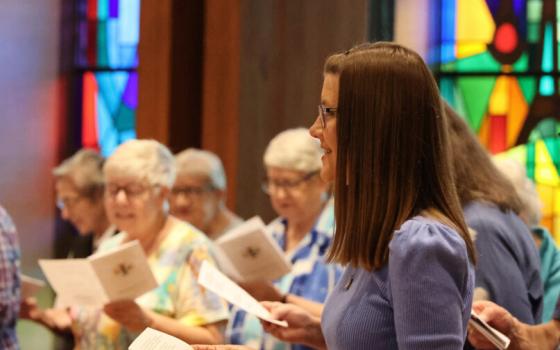
Relics marked with the names of Sts. John Masias and Martin de Porres at St. Anthony's Chapel in Pittsburgh (CNS/Nancy Wiechec)
Fr. Suitbert Mollinger, a wealthy 19th-century Belgian-born priest and physician, had an unusual hobby. He liked to collect religious relics. His collection became so large -- reaching over 5,000 -- that he had to build his own private chapel to house them.
Mollinger named the chapel after St. Anthony, and, to this day, it is the home of the second-largest collection of relics in the world, after the Vatican's. An estimated 500,000 tourists and pilgrims visit the relics at St. Anthony's Chapel in Pittsburgh every year.
Carole Brueckner, a tour guide and chair of the committee that oversees the chapel, has given hundreds of tours since the 1980s. More often than not, people say that they feel a special presence when they enter the chapel, she said. Perhaps that feeling comes from the 22 pieces of the cross Jesus died on, a shred from Mary's veil, bits of bone from each of the apostles, a piece of the crown of thorns, and even a bit of the sponge filled with wine used to nourish Jesus as he hung on the cross.
NCR visited Clyde, Mo., where there is a monastery ran by the Benedictine Sisters of Perpetual Adoration. In the monastery is a chapel holding over 550 first and second class relics. Take a look at the video below for more.




